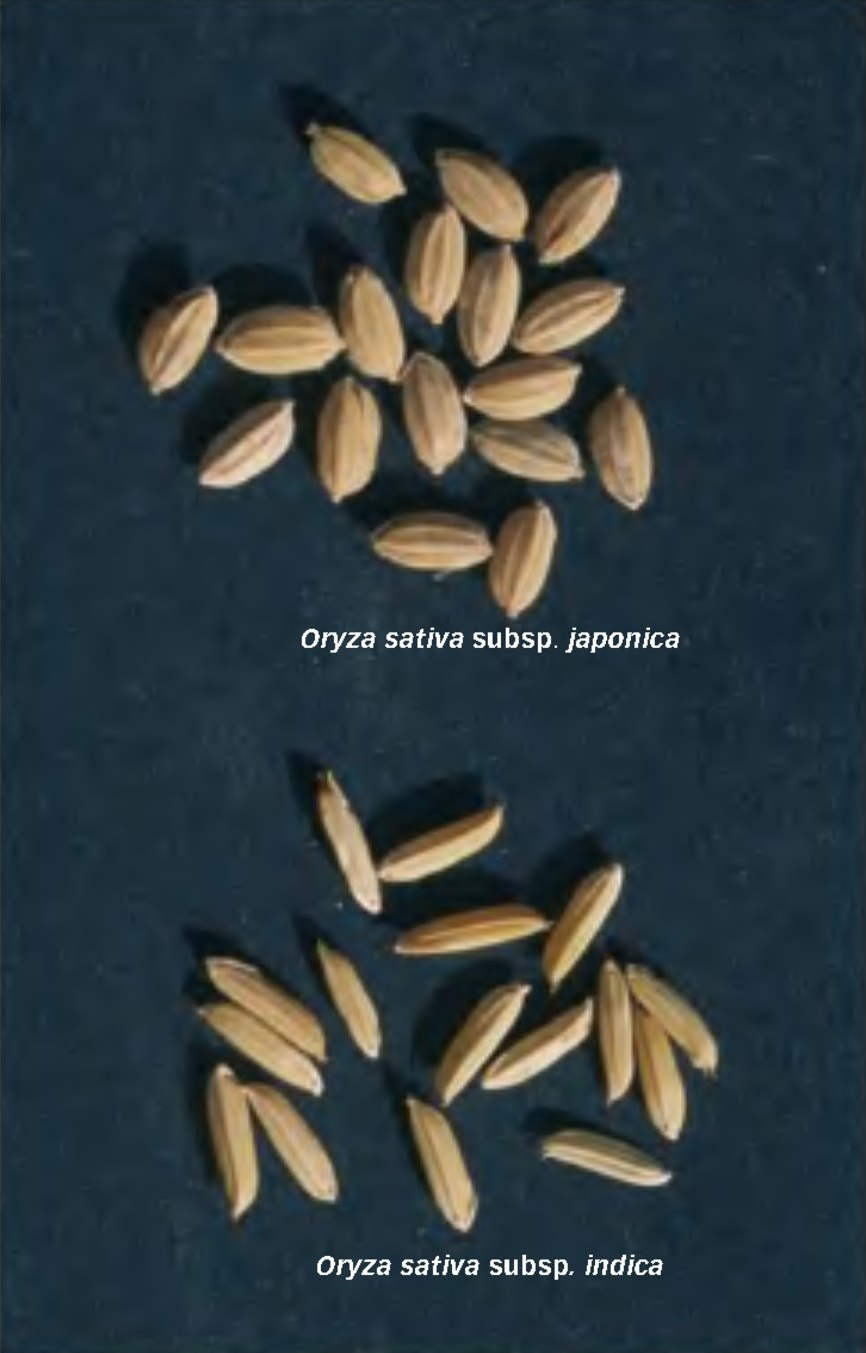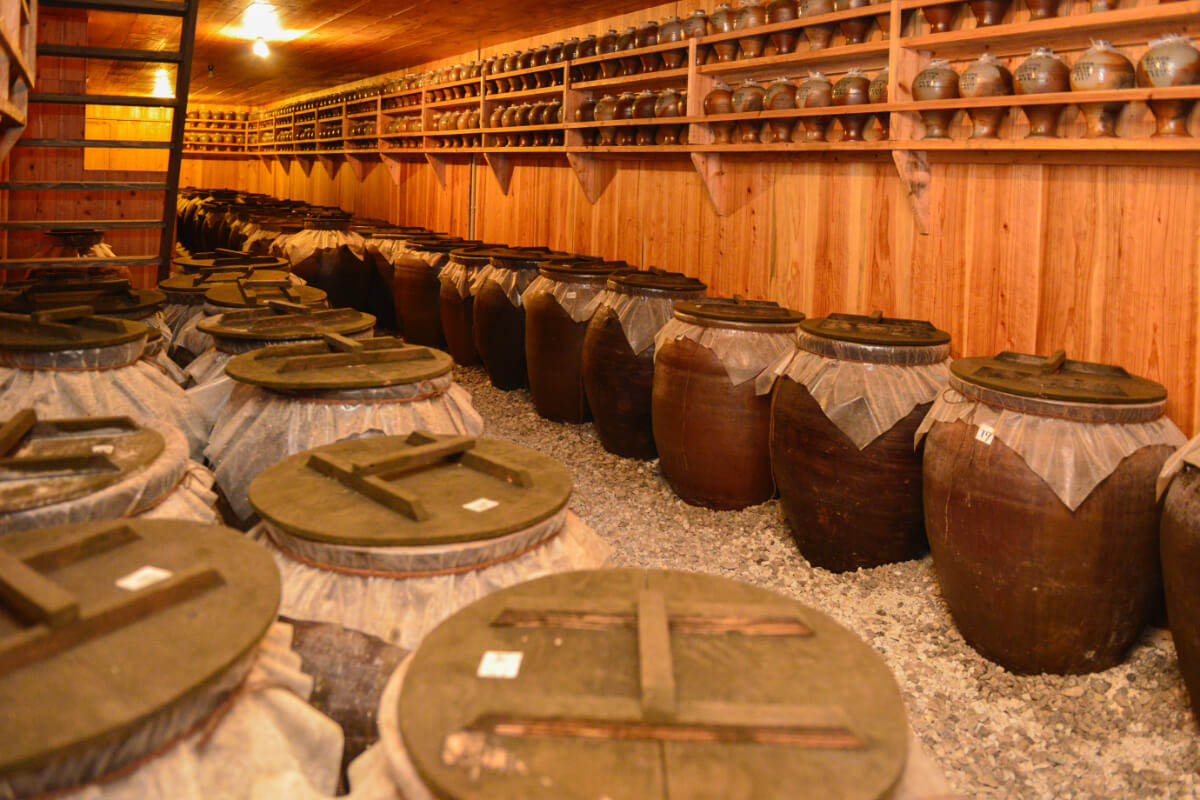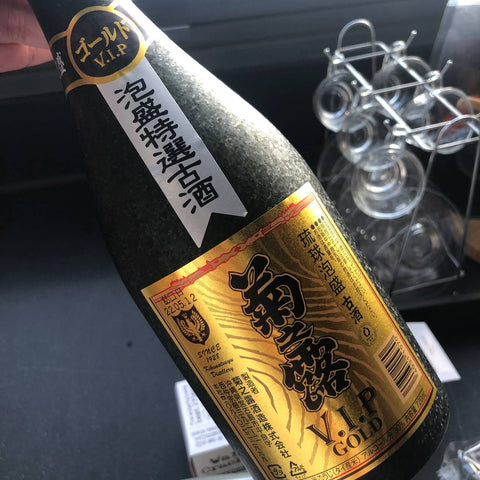When we think of Japanese spirits, our minds usually go to sake or shochu, smooth and fragrant spirits made from sake rice and grains respectively.
But the oldest Japanese spirit actually originates from a part of Japan you’d probably least expect – from the islands of Okinawa. The history of Awamori is closely linked to Okinawa’s history too – its early production dates back to 600 years ago, during the period of the Ryukyu Kingdom in the 15th century, with production methods being a product of Thai and Chinese influences that arose out of the close trading relationship between China and the Ryukyu Islands in Okinawa.

Today, Awamori is a large part of Okinawa’s culture and heritage, and is often enjoyed with meals and consumed during celebrations and special occasions. We learn that Awamori that has been aged for at least 3 years is also known as Kusu, and in Okinawa, is often drunk to celebrate special occasions such as the birth of a child, or to celebrate someone coming of age when they turn 20 years old.
While sake is made from short-grain Japonica rice from Japan (what we commonly understand to be sake rice), Awamori is made from long-grain Indica rice from Thailand. This element is what distinguishes Awamori from other Japanese spirits and sake and gives it its unique taste and flavour profile.

A comparison between Japonica rice grains used for Sake brewing and Indica rice grains used for Awamori production (Image Source: Wikimedia Commons)

Another thing that distinguishes Awamori from other types of alcohol from Japan is the type of koji mould that is used in the fermentation process. While Japanese sake and shochu are made using yellow or white koji mould, Awamori is made using black koji mould (also known as kurokoji mould). The use of Kurokoji mould is also unique to Okinawa, with its usage having originated from Okinawa due to its adaptability to Okinawa’s hot and humid subtropical climate. Kurokoji mould produces a large amount of citric acid during the production process, and due to its high acidity, protects the fermentation mash from airborne bacteria prevalent in a high humidity climate.
These two ingredients, Indica rice from Thailand and kurokoji mould, are the key elements that come together in harmony to produce the flavour and texture unique to Ryukyu Awamori.
 Our tasting flight of 9 different Awamori spirits and food pairings to complement the sweet and umami flavours of Awamori.
Our tasting flight of 9 different Awamori spirits and food pairings to complement the sweet and umami flavours of Awamori.
As interesting and unique as Awamori is, the spirit is not easy to come by in Singapore, having a very limited distribution outside of Japan. So of course we were thrilled when the opportunity came for us to have a taste of Japan’s oldest spirit during this masterclass hosted by The Beverage Clique in collaboration with Okinawa’s Ryukyu Awamori Association, and Criadera Concepts on Awamori: Okinawa’s Unwavering Spirits. Our masterclass session was guided by Ms. Kanako Takahashi, a very knowledgeable expert in Japanese spirits and sake who shared her enthusiasm and knowledge about Awamori.
How is Awamori Made?
Ms. Kanako walks us through the production process of Awamori. First, the main ingredient, imported Indica rice from Thailand is rinsed and soaked in water until it absorbs the moisture required, after which the rice is then steamed. While majority of sake is made using soft water native to mainland Japan, Awamori is uniquely made using the local hard water found in Okinawa, which is rich in minerals that stimulates the activity of microorganisms and produces rich flavours in the spirits.
After producing the steamed rice, Kurokoji mould spores are then integrated into the steamed rice to create the fermentation starter needed to produce the fermentation mash (also known as the moromi). The steamed rice is then cooled down and mixed with the fermentation starter, and after a few days, it becomes the rice malt, also called komekoji. The rice malt is transferred to the fermentation mash tank, and yeast and water are added to the mix, reacting to produce alcohol.
After the fermentation process, the raw Awamori is distilled using a pot still. The raw awamori is then diluted with some water to adjust the strength of the spirit, before being aged in earthenware pots for approximately six months to a year. This ageing process helps to give Awamori its rich flavour and fragrance, after which the spirit is bottled and shipped out for consumption.

Awamori being aged in earthenware pots (Image Source: visitokinawajapan.com)
Across Okinawa with a Flight of Awamori
Having never tasted this spirit of historical significance before, we were of course excited to get to tasting the 9 different unique expressions of Awamori from different distilleries across Okinawa ready for us, each with their own unique characteristics and taste profiles.
 Let's get to tasting!
Let's get to tasting!
1. Zanpa White, 25% ABV

The first Awamori we tried was the Zanpa White, 25% ABV, produced by the Higa Shuzo, Yomitan-son distillery. The Higa Brewery, we were told, was founded in 1948, and their production technique pays respects to the centuries-old techniques of Awamori production.
The Zanpa White would be the lightest and the spirit with the lowest ABV out of the range of 9 Awamori spirits that we tasted, with a light taste with hints of umami, a slight savouriness on the finish, as well as a slight oily texture.
2. Kikunotsuyu Kusu VIP Gold, 30% ABV

Next, we moved on to the Kikunotsuyu Kusu VIP Gold, 30% ABV, from the Kikunotsuyu Distillery on Miyako Island. This was the distillery’s most popular product and is based on a spirit that has been stored for 8 years.
This Awamori had a vegetal aroma, a more earthy flavour profile and a richer body.
3. Shinzato Ryukyu Premium, 35% ABV

We then tasted the Shinzato Ryukyu Premium, 35% ABV, produced by the Shinzato Shuzo Distillery from Uruma City, Okinawa. We also learned that this was the oldest Awamori distillery in Okinawa. This Awamori was a blend of 5-year old and 3-year old spirits that had undergone careful ageing to produce its delicious flavour profile.
A light-bodied spirit with a good balance and sweetness on the palate, with notes of honey and candied fruit and a medium finish.
4. Shoen no Sato, 30% ABV

The four Awamori we tasted was one of the unique ones among the flights of Awamori pours. The Shoen no Sato, 30% ABV, produced by the Izena Shuzojo Distillery from Izena Island is produced purely from Hitomebore rice native to Izena Island, which is reputable for its rice production, instead of the usual Thai Indica rice.
The nose on the Shoen no Sato was very aromatic, with hints of truffle mushroom, and on the palate, a sweetness integrated with a subtle taste of mushrooms.
5. Sho Yaesen, 40% ABV

Next was the Sho Yaesen, 40% ABV produced by Yaesen Brewery. We learned that this spirit was achieved through a triple distillation process, resulting in a clean spirit with good strength.
The clean taste of the Awamori definitely came through on the palate, as well as sweet, floral, and aromatic flavours that weren’t overpowering but elegantly married with the cleanliness of the spirit.
6. Sakimoto Araroka 44, 44% ABV

Moving on to the sixth Awamori pour, the Sakimoto Araroka 44, 44% ABV, from the Sakimoto Distillery on Kume Island. This spirit was a coarsely filtered Awamori, bottled with minimal filtration, preserving the traditional taste of Awamori.
The Sakimoto Ararok 44 had a well-rounded and full body, with a rich, complex taste and clean finish, and an oiliness and slight heat on the mouthfeel.
7.Sakura Ichiban Aged 3 Years, 30% ABV

Lucky number seven was the Sakura Ichiban Aged 3 Years, 30% ABV, from the Yamakawa Shuzo Distillery. This Awamori is named after the first of many Cherry Blossom Viewing Festivals held across Japan, in Yaedake. What gives this Awamori its “Sakura” quality as implied in its name is the Sakura yeast from the Kanhi cherry blossoms of Mount Yae-Dake used to brew the spirit.
The gently, fruity, and floral taste, together with the elegant and refined texture made this a definite crowd-pleaser.
8. Taragawa Kuon, 35% ABV

Next, we had a taste of the Taragawa Kuon, 35% ABV, from the Taragawa Distillery. This is an aged Awamori that is based on a 10-year old, long-term aged spirit.
This Awamori had an all-rounded, light, mellow and sweet flavour profile, that paired deliciously together with a “nian gao” made from flour and sweet potato.
9. Ryukyu Awamori Kuusu No Sato 8 Years, 44% ABV

Last but not least was the Ryukyu Awamori Kuusu No Sato 8 Years, 44% ABV, a product of the Ryukyu Awamori Kusu No Sato Cooperative Association, which is a business cooperative of 43 Awamori distilleries across Okinawa. This Awamori is made from a blend of aged Awamori (also known as kusu) from the 43 Awamori distilleries part of this business cooperative.
This was a woody, rich, expressive and full-bodied spirit. If there is one Awamori to unite them all, it would be this Ryukyu Awamori Kuusu No Sato – a fitting pour to end the tasting flight on.
After tasting the flight of Awamori, we were also treated to a sample of two different Awamori-based cocktails to experience the versatility of the spirit. The first was a Sakura cherry blossom cocktail, Awamori Number 7, the Sakura Ichiban Awamori used as its base to produce a delicious fruity and floral cocktail, elegantly garnished with a rosebud.
 An elegant, floral, Sakura Awamori cocktail.
An elegant, floral, Sakura Awamori cocktail.
The second was a coffee cocktail that reminded us of a sweet espresso martini, made from a unique coffee and Awamori liqueur and garnished with coffee beans. We discovered how delicious Awamori could be used in cocktails, with their range of gentle and aromatic flavours and refined textures.
 A delightful and rich coffee Awamori cocktail.
A delightful and rich coffee Awamori cocktail.
Our curiosity sparked, we wanted to learn more about the other ways that Awamori would be consumed, and we learned that in Okinawa, RTD (Ready-to-Drink) formats of Awamori such as coffee-Awamori cocktail blends are readily made available at retailers and family marts across the islands.
 Coffee Awamori - A popular way to drink Awamori in Okinawa
Coffee Awamori - A popular way to drink Awamori in Okinawa
Awamori distilleries across Okinawa are also often experimenting with the Awamori production, such as experimentations with different types of yeasts (such as the Sakura yeast) used in the fermentation process and producing other types of spirits such as gin and whisky. The folks from Taragawa Distillery even shared with us their recent experimentations with other spirits, such as a Miyakojima Rum produced from locally-sourced sugar cane from Miyakojima, and even experimentation with producing mezcal from a locally-grown agave plant in Okinawa!

You'll have to see it to believe it - Taragawa Distillery showed us a whole Agave plant that they grew right in Okinawa!
It's clear to us that Awamori holds a great cultural and historical significance to Okinawa and its dozens of Awamori distilleries, many of which work hard to preserve the traditional production techniques, methods, and customs of the spirit, while also experimenting and innovating to excite the palates of modern customers. Outside of Japan, there is lesser known about the spirit compared to Japanese sake and shochu, and we’ll be excited to see more of this refined and strong spirit here in Singapore and the rest of the world.
Till the next time, happy sipping!

@ChopstickPride







